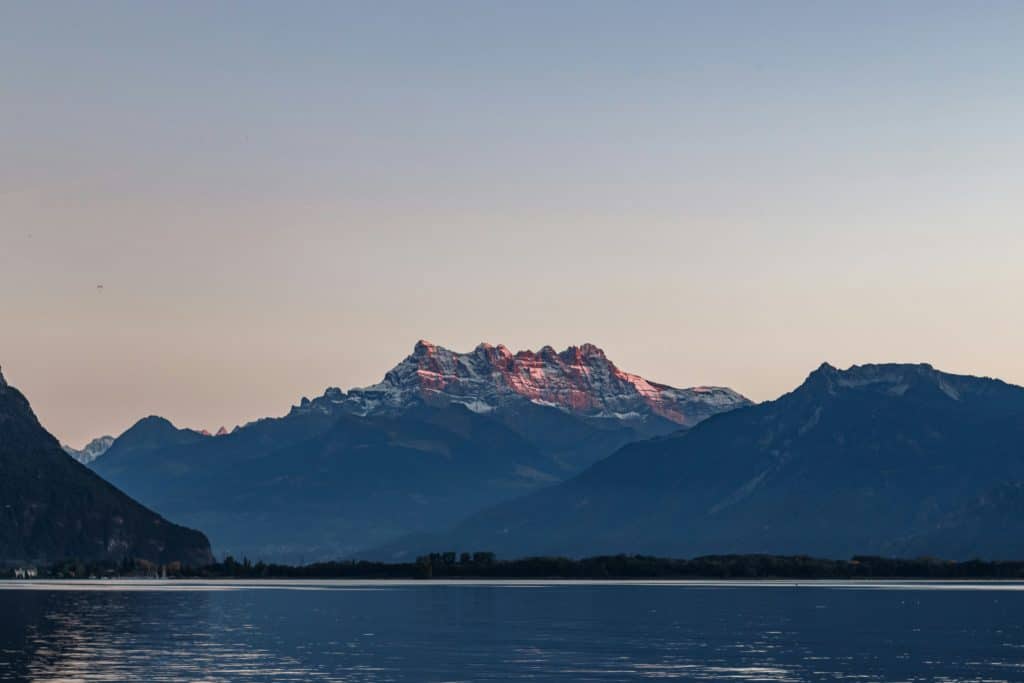𝗟𝗲 𝗟𝗲́𝗺𝗮𝗻 𝗲𝘀𝘁 𝘂𝗻 𝗷𝗼𝘆𝗮𝘂 and this is perhaps even truer in St-Gingolph. It is to this commune that the lake has been donating magnificent pearls of Lake Geneva for the last hundred years.
So put down your flippers and snorkel and leave the anodonts alone. There's no point in going over the bottom of the lake with a fine-tooth comb. The molluscs of Lake Geneva are in no way involved in the production of these pearls. They have been made since the 1920s by the Patural couple 𝗮̀ 𝗽𝗮𝗿𝘁𝗶𝗿 𝗱'𝗲́𝗰𝗮𝗶𝗹𝗹𝗲𝘀 𝗱'𝗮𝗯𝗹𝗲𝘁𝘁𝗲𝘀.

Natural" pearls are actually produced by certain molluscs, such as pearl oysters. When an irritating object enters the shell, the animal reacts by surrounding it with a layer of mother-of-pearl to protect itself, forming one or more pearls. Since the beginning of the 20th century, this natural event has been provoked by human beings to grow pearls.
The technique used in St-Gingolph is older. It dates back to the 17th century and is thought to have been discovered by a certain François Jaquin (see 60' on the ablette). 𝗟𝗮 𝗻𝗮𝗰𝗿𝗲 𝗹𝗶𝗾𝘂𝗶𝗱𝗲 𝗲𝘀𝘁 𝗰𝗿𝗲́𝗲́𝗲 𝗮̀ 𝗽𝗮𝗿𝘁𝗶𝗿 𝗱𝗲𝘀 𝗲́𝗰𝗮𝗶𝗹𝗹𝗲𝘀 𝗱𝗲 𝗹'𝗮𝗯𝗹𝗲𝘁𝘁𝗲. Its exact composition is not described and remains a manufacturing secret... 𝗨𝗻𝗲 𝗯𝗶𝗹𝗹𝗲 𝗱𝗲 𝘃𝗲𝗿𝗿𝗲 𝗽𝗶𝗾𝘂𝗲́𝗲 𝗮𝘂 𝗯𝗼𝘂𝘁 𝗱'𝘂𝗻𝗲 𝘁𝗶𝗴𝗲 𝗲𝘀𝘁 𝗲𝗻𝘀𝘂𝗶𝘁𝗲 𝘁𝗿𝗲𝗺𝗽𝗲́𝗲 𝗱𝗮𝗻𝘀 𝗹𝗲 𝗯𝗮𝗶𝗻 𝗻𝗮𝗰𝗿𝗲́ 𝗽𝘂𝗶𝘀 𝘀𝗲́𝗰𝗵𝗲́𝗲. The protocol is repeated about twenty times.
The factory was doing well. It is said that in the 1950s, many tourists took the boat from Montreux to come to St-Gingolph to stock up on necklaces and other jewellery. At the time, the Patural company employed around thirty people and 𝗽𝗮𝗿𝘁𝗶𝗰𝗶𝗽𝗮𝗶𝘁 𝗮̀ 𝗹'𝗲𝘀𝘀𝗼𝗿 𝘁𝗼𝘂𝗿𝗶𝘀𝘁𝗶𝗾𝘂𝗲 𝗱𝗲 𝗹𝗮 𝗰𝗼𝗺𝗺𝘂𝗻𝗲.
Subsequently, under pressure from international competition and falling demand for pearls, the Patural couple's factory was forced to cease trading in the 1970s.
Today, the factory has been relaunched by Jean-Loïc Selon. Based on traditional know-how, the process has been refined. The traditional bleak shell has been replaced by that of the féra, preferred for its brilliant white mother-of-pearl, while new pearls in the colours of the lake have been skilfully created. The result is a magnificent lake pearl that is both shock-resistant and environmentally friendly! Indeed, 𝗹𝗮 𝗳𝗮𝗯𝗿𝗶𝗰𝗮𝘁𝗶𝗼𝗻 𝗱𝗲𝘀 𝗽𝗲𝗿𝗹𝗲𝘀 𝗿𝗲𝘃𝗮𝗹𝗼𝗿𝗶𝘀𝗲 𝘂𝗻 𝗽𝗿𝗼𝗱𝘂𝗶𝘁 (𝗹𝗮 𝗻𝗮𝗰𝗿𝗲 𝗱𝗲 𝗳𝗲𝗿𝗮) 𝗾𝘂𝗶 𝘀𝗲𝗿𝗮𝗶𝘁 𝗮𝘂𝘁𝗿𝗲𝗺𝗲𝗻𝘁 𝗷𝗲𝘁𝗲́ 𝗽𝗮𝗿 𝗹𝗲 𝗽𝗲̂𝗰𝗵𝗲𝘂𝗿.
Photos : Fabrique des Patural, Drying pearly pearls - Les Perles du Lac
𝐒𝐨𝐮𝐫𝐜𝐞𝐬 :
- Le Temps(25 July 2020)
- Une info en 60' n°7 The ablette, the pearl of fish".
- Lake pearls


